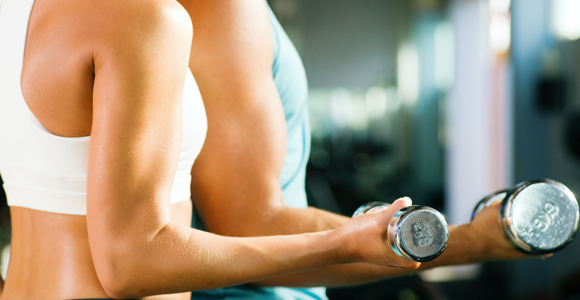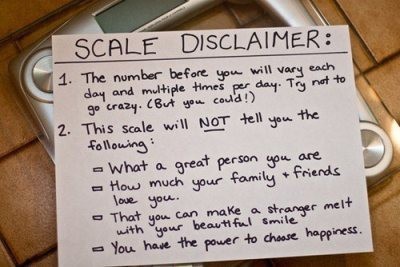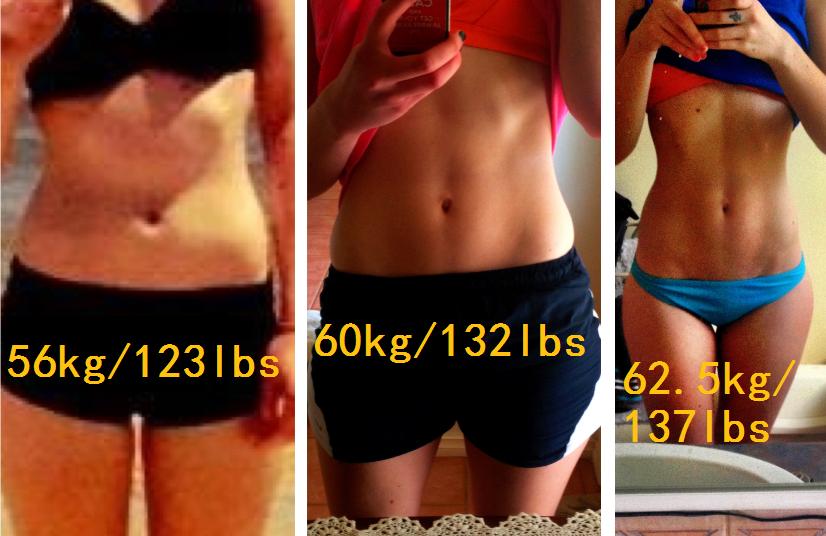
With summer fast approaching, "beach-think" has set in and the current most-popular question is, how do I get rid of my gut?"
If you think it's time to bring out those abs for summer, then this is the article for you!
Gadgets And Gimmickry
The science and art of eating for fat loss and muscle gain have become big business. Unfortunately, this big business, in the eternal quest to get paid, has taken the focus off excellent eating and excellent exercise regimens.10000001
Instead, with infomercials, marketing and advertising, and strategic alliances with the media (magazines, TV, etc), the diet and exercise industry has confused most people to the point that all they can do now is call up 1-800 numbers or jump on a secure server with their credit card ready. Some of these infomercials not only ignore the role of diet and exercise, they try to convince you those things aren't necessary when you buy their fat melting vibrating belts and magic pills.
Why has this transpired? Well, the answer is simple. And for three easy payments of $19.95, I'll tell you. No, no, just kidding. How about a quote instead?
"Throughout history, the difference between scientists and physicians on the one hand, and quacks and promoters on the other, has been that the scientists and physicians have attempted to show both what they knew and what they didn't know while the promoters saw the questions as simple and obvious, and always had all the answers."
Therefore, it doesn't seem such a mystery why people buy into the gimmickry. Telling the people what they want to hear wins them over. T00. The problem is that while radical diets, gadgets, and pills may work in the short run, they often compromise an individual's health and well-being more than the extra fat does if they're overweight.
This makes the cost to benefit ratio ridiculously low. The other problem is that these strategies don't typically work in the long run. So if you're trying radical new methods, it's a safe bet to assume that after the "treatment" is over, you'll likely go back to normal.
Now personally, I love being lean, but I also enjoy my good health. And my focus remains on using the basics of good, natural food selection and an active lifestyle that includes regular, preplanned physical activity. I'm not a big fan of prepackaged meals, gadgets or magic potions. As revolutionary as it sounds, I believe you can get lean by manipulating your diet and exercise alone.
So the purpose of this article is to provide a scientific basis for making good food selections, the real "secret" behind getting and staying lean. More specifically, I'll discuss the following:
- Why a calorie is not a calorie
- Why a protein is not a protein
- Why a carbohydrate is not a carbohydrate
- Why a fat is not a fat
- How to choose your food wisely
A Calorie Is Not A Calorie
While the gurus and pundits of the past believed that all calories were created equal, and while much of the current dietetics herd still believes it, I'm here to tell you why it just ain't true. To do so, I'll focus on three main arguments: the Thermic Effect of Feeding (TEF), cross-cultural studies, and the effects of isoenergetic diets using different foods.
The TEF, as I've said many times before, represents the additional caloric expenditure (above resting metabolism) that it takes to digest, absorb, and process the food you eat. Studies on the thermic effect of different foods have been important in describing the different effects of the macronutrients on metabolism.
The TEF lasts from between one to four hours after eating a meal. When adding up the thermic effects from each of your meals, this extra metabolism represents between 5% and 15% of your total daily energy expenditure. Therefore, if your daily energy expenditure is 3,000kcal, about 150 to 450kcal of that comes from the TEF. Interestingly, different macronutrients tend to have different effects on metabolism.
Welle et al. (1981) and Robinson et al (1990) demonstrated that during a normal six hour period of rest and fasting (basal metabolism), subjects burn about 270kcal. When eating a single 400kcal meal of carbs alone (100g) or fat alone (44g), the energy burned during this six hour period reached 290kcal (an additional 20kcal).
Interestingly, when eating 400kcal of protein alone (100g) the subjects burned 310kcal during this six hour period (an additional 40kcal).
Therefore, protein alone had double the thermogenic power vs. fat or carbs alone!
Swaminathan et al (1985) demonstrated that during a normal fasted 90-minute period, both lean and obese subjects burned about 110 calories. When consuming a 400kcal, fat only meal (44g), the lean subjects burned 125kcal (+15kcal) while the obese subjects only burned 110kcal (+0Kcal).
This indicates that while the lean can up-regulate metabolism when eating fat, the obese may, in fact, have a defect in their thermogenic response mechanisms for fat. When fed a 400kcal mixed meal (P+C+F), the lean subjects burned 130kcal (+20kcal) during the 90-minutes while the obese burned 125kcal (+25kcal) during the 90-minutes.
These data demonstrate that mixed meals are more thermogenic than fat only meals and that lean people have a better TEF response than the obese.
So now that you understand that different macronutrients (at the same energy intake) can alter calorie balance within a single meal, here's another interesting argument for the fact that all calories were not created equal. In a study by Campbell et al (1991), 6,500 rural and urban Chinese were compared to the US population norms for energy intake, macronutrient breakdown, and health.
This is an important comparison due to the fact that obesity and cardiovascular diseases have reached epidemic proportions in North America while the prevalence is much lower in China. Check out this data on average nutrient intake:
U.S.
- Energy - 30.6kcal/kg
Carbohydrate - 42% (224g)
Fat Intake - 36% (85.86g)
Alcohol - 7%
Fiber - 11g/day
Protein - 15% (80g)
% Protein from Animal - 70% (56g)
BMI (wt/ht*ht) - 25.8
- Energy - 40.6kcal/kg
Carbohydrate - 71% (504g)
Fat Intake - 14% (44g)
Alcohol - 5%
Fiber - 33g/day
Protein - 10% (71g)
% Protein from Animal - 11% (7g)
BMI (wt/ht*ht) - 20.5
Looking at the macronutrient breakdowns, the Chinese are on a high-carb diet, no doubt. But they're not fat. And while their protein intake, by percentage, is lower, they do get nearly as much total protein, by gram amount, as we do. Perhaps we could take a lesson from the Chinese.
Clearly not all calories are created equal because if they were, the Chinese would be fatter than we are! But instead, the average 100kg Chinese person gets to enjoy a 4060kcal diet while keeping his lean physique.
I know, I know, that study is only epidemiological and therefore lacks some explanatory power, but stay tuned as I present two final studies to demonstrate that all calories were not created equal.
In a study by Demling et al (2000), the researchers demonstrated that food choice and timing could be more important than total calorie intake. Before the study began, overweight police officers, eating about 2100 to 2300kcal per day, tipped the scales at 216lbs with 56lbs of fat mass (25% fat) and 158lbs of lean mass.
They were eating about 74g protein, 380g carbs, and 56g fat. Since this is clearly a hypocaloric diet, they should've been losing weight. But they weren't.
Unfortunately for these poor guys, they were eating only 10% of their calories at breakfast and a whopping 50% of their calories right before bed. In addition, 50% of their carb intake was sugar!
After diet counseling, these guys still ate the same diet in terms of macronutrients, but they ate 70% of their calories during the active parts of their day and 80% of their carb intake was complex and low on the GI scale.
At the end of twelve weeks these guys lost 3lbs of weight and 5lbs of fat while gaining 2lbs of lean mass. And this was without changing exercise habits! While these changes weren't huge, it's clear that food choices and timing make a difference.
In another study by T-mag's own Doug Kalman et al (2001), Doug showed that a 1200kcal, high-protein (47%P, 36.5%C, 16.5%F) diet was more effective than a 1200kcal, moderate-protein (24.5%P, 48.3%C, 27.2%F) diet for fat loss. Subjects in the high-protein group lost 6.3lbs of body weight, 5.3lbs of fat weight, and only 1lb of lean weight.
The moderate protein group lost 3.1lbs of body weight, no fat weight, and 4.5 whopping pounds of lean weight. Try telling these subjects that a calorie is a calorie!
In the end, there clearly are ways to burn more calories and lose more weight while eating diets differing in macronutrient content but similar in energy intake. In addition, if you can believe it, there may even be ways to eat more food while staying leaner. Just ask the Chinese.
A Protein Is Not A Protein
In this section, I'd like to demonstrate that not all proteins were created equal. Specifically, I'll briefly discuss whey and casein protein, fast and slow protein, animal and vegetable protein, cod/fish protein and soy protein.
The topic of whey vs. casein has been discussed ad nauseum lately so rather than belabor this issue, I'll quickly summarize a few studies.
Demling et al (2000) compared two groups on a 2100 to 2300kcal diet containing 143gP (26%), 286gC (52%), and 49gF (20%). Both groups weight trained for twelve weeks but received 75g of their daily protein intake from either a whey-based drink or a milk-protein isolate drink (80% casein, 20% whey).
At the end of the study, the milk-protein isolate group lost more fat (15.4lbs vs. 9.2lbs), gained more lean mass (9lbs vs. 4.4lbs), and gained more upper and lower body strength than the whey group.
It appears that milk protein isolate ingestion, when on a training program, may be a better way to enhance fat loss and muscle gain.
Lands et al (1999) showed that when supplementing with 20g of whey or casein for three months, the whey group had up-regulated their antioxidant defense systems and had increased performance in an anaerobic exercise task. The casein group didn't improve on any of the above parameters. Therefore whey may be better for antioxidant protection.
Since the fast vs. slow debate focuses on whey (fast) vs. casein (slow), let's address that research here. In studies by Boirie et al (1997) and Dangin et al (2001), it was shown that whey protein is better for up-regulating protein synthesis while casein protein is better for down-regulating protein breakdown.
The take-home message from these studies is that a milk protein blend or a supplement containing whey + casein may be your best bet for body composition improvements.
Next up, what about those kooky vegetarians? Well, in comparing an omnivorous diet (meat containing) with a vegetarian diet, Campbell et al (1995, 1999) demonstrated that strength gains and body composition improvements are impaired when meat is removed from the diet.
In their studies, subjects weight trained for twelve weeks while consuming a 2300kcal diet consisting of 70-90gP (12-15%), 267-317gC (49%), and 82-87gF (7-11%). The only difference between groups was the fact that one group ate a meat-free diet while the other group ate meat.
At the end of the twelve weeks, the meat eaters lost 2.8lbs of fat while gaining 3.74lbs of lean tissue. The vegetarians, on the other hand, lost no fat weight and lost 1.76lbs of lean tissue.
Regarding fish in the diet, Lavigne et al (2001) demonstrated that cod protein was better than soy or casein for increasing muscle glucose sensitivity and for preventing insulin resistance in high-fat fed rats.
Since codfish has a favorable omega-3 profile, the researchers duplicated their work using only the protein component of cod and the benefits remained the same. This indicates that eating fish may improve your carbohydrate sensitivity and ultimately your body composition and these effects may be independent of the fatty acid profile.
Finally, Lohrke et al (2001) showed that growing pigs fed a diet consisting of soy as the only source of protein had lower body weights, amino acid imbalances, increased cortisol levels, and increased muscle breakdown.
The casein-fed pigs grew normally. This study indicates that a diet containing exclusively a low quality protein (soy in this case) may interfere with normal growth and development.
So, how do we use this information to our advantage?
Well, since different protein sources confer different benefits, your best bet is to eat some fish protein (cod, salmon, tuna), some lean meat protein, and some milk protein isolates or whey/casein blends each day. Eating from a limited list of protein sources is a big mistake.
Depending on their individual needs, my clients typically eat a different protein source with every meal so that by the end of the day they've gotten complete protein from egg whites, fat free cheese, milk protein isolate shakes, cottage cheese, salmon or tuna and lean beef, not to mention the incomplete sources like mixed beans and mixed nuts.
Summary Of Part 1
- With all the media hype out there, the key to staying lean and mean is still diet, specifically, good food choices.
- A calorie is not a calorie because the macronutrient content of each meal affects the body's response to the feeding. That basically means you could change your body composition by eating the same amount of calories each day, but making different food choices. Meal timing also plays an important role.
- A high protein diet may be better than a moderate protein diet for fat loss.
- A protein is not a protein because different kinds of proteins affect the body in different ways. Milk protein isolate (80% casein, 20% whey) may be better than whey alone if your goal is fat loss. Whey looks like it's better for antioxidant protection, however.
- A supplement containing whey + casein may be your best bet for body composition improvements.
- Eating fish may improve your carbohydrate sensitivity and ultimately your body composition.
- Soy still sucks as a primary protein source
- John Berardi





 RSS Feed
RSS Feed